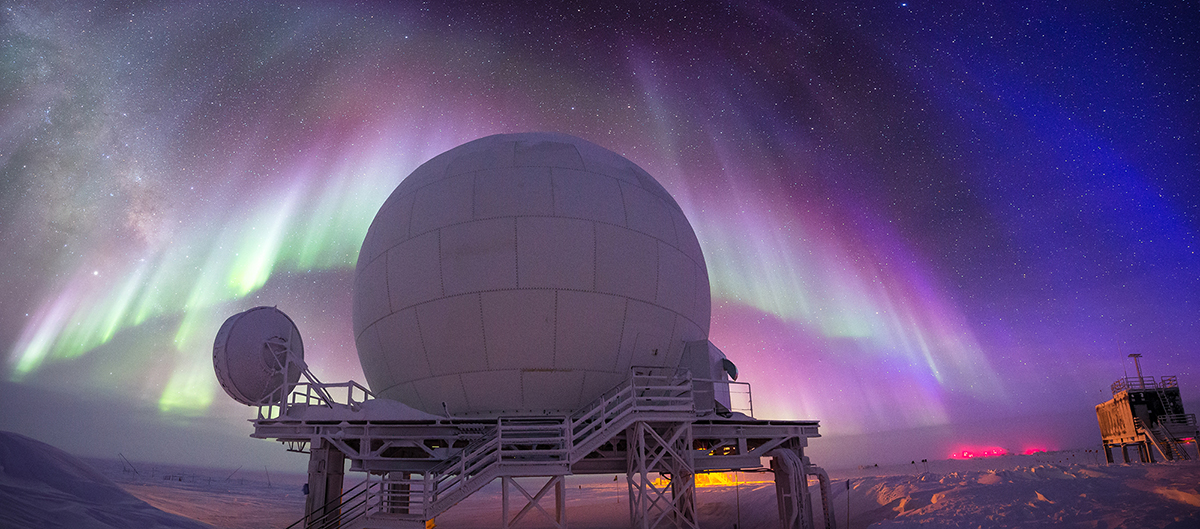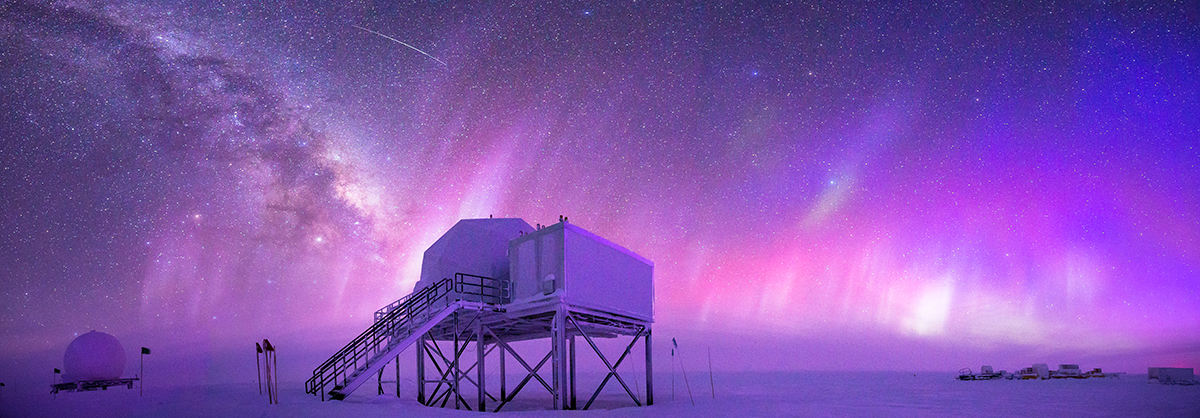Brilliant Southern Lights and Milky Way Shine at South Pole (Photos)

Like the inside of a child's iridescent summer bubble wand, the aurora australis — also known as the southern lights — and the Milky Way bend across the sky in a stunning display of sapphire blue and fuchsia pink.
Astrophotographer Hunter Davis captured two images of our galaxy's band of neighboring stars sharing the sky with the southern lights. They were taken in Antarctica, just over a relay station at the South Pole before the winter solstice, Davis said. The snow that blankets the base of the photos accentuates the brightness of the lights in the sky.
"I've been working and living at the South Pole station since Oct. 30th 2016, and will finally leave for home in early November," Davis told Space.com in an email. "The night sky down here is one of the prettiest things I've ever seen."

Magnetized plasma particles are often released from stormy sunspot regions on the sun's surface and travel into space as solar wind. After coming toward us in what is roughly a 40-hour journey, the particles meet Earth's upper atmosphere to create a magical display of southern lights. Most people in North America are more familiar with the term for this hemisphere's counterpart, the aurora borealis, than they are with the aurora australis. The stormy, smoldering birth of the solar wind might surprise admirers who are only familiar with the majestic, seemingly peaceful auroras that appears in the skies of each hemisphere.
The grandeur of the aurora australis is highlighted further with the Milky Way visibly shining behind it. The galaxy has a diameter of 100,000 light-years, so one can only imagine the colorful variety of aurora shows that could be playing out on other worlds with the Milky Way backdrop.
Hunter Davis captured these images with a Canon 6D camera and Nikon 14-24-mm lens.
Editor's note: If you capture an amazing photo of the night sky and you'd like to share it with us and our partners for a story or image gallery, send images and comments in to managing editor Tariq Malik at spacephotos@space.com.
Get the Space.com Newsletter
Breaking space news, the latest updates on rocket launches, skywatching events and more!
Follow Doris Elin Salazar on Twitter @salazar_elin. Follow us @Spacedotcom, Facebook and Google+. Original article on Space.com.
Join our Space Forums to keep talking space on the latest missions, night sky and more! And if you have a news tip, correction or comment, let us know at: community@space.com.

Doris is a science journalist and Space.com contributor. She received a B.A. in Sociology and Communications at Fordham University in New York City. Her first work was published in collaboration with London Mining Network, where her love of science writing was born. Her passion for astronomy started as a kid when she helped her sister build a model solar system in the Bronx. She got her first shot at astronomy writing as a Space.com editorial intern and continues to write about all things cosmic for the website. Doris has also written about microscopic plant life for Scientific American’s website and about whale calls for their print magazine. She has also written about ancient humans for Inverse, with stories ranging from how to recreate Pompeii’s cuisine to how to map the Polynesian expansion through genomics. She currently shares her home with two rabbits. Follow her on twitter at @salazar_elin.









